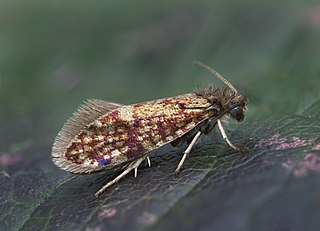
Eriocrania cicatricella is a moth of the family Eriocraniidae found in Europe. It was first described by Johan Wilhelm Zetterstedt in 1839. The larvae mine the leaves of birch.

Mompha raschkiella is a species of micromoth in the family Momphidae. The moth was first described by German entomologist Philipp Christoph Zeller in 1838.

Mompha epilobiella is a moth in the family Momphidae found in Europe and North America.

Mompha ochraceella is a moth of the family Momphidae found in Africa, Asia and Europe.
Micropterix facetella is a species of moth belonging to the family Micropterigidae, which was described by Zeller in 1851. Micropterix facetella has a 4 male facetalla to 1 female facetalla ratio and during the mating season female facetella are said to visit a flower, only to eat, and the male facetella are there for the purpose to mate. For the common ratio, the male facetella goes to a near by location that another male facetella was already there as a pursuit of competition. A competition on who will get the female first, which is why there is 4 males facetalla for every 1 female facetella. It is known from Croatia and Slovenia.

Mompha subbistrigella, the garden cosmet, is a moth of the Momphidae family found in most of Europe.

Mompha langiella is a moth of the family Momphidae. It is found in most of Europe, except parts of the Balkan Peninsula and the Mediterranean islands.

Mompha is a genus of moths in the family Momphidae that was first described by Jacob Hübner in 1819. It has four subgenera.
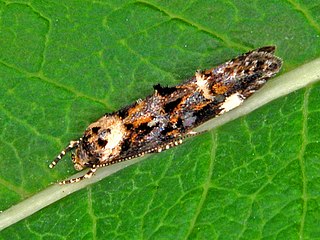
Mompha conturbatella, also known as the fireweed mompha moth, is a moth in the family Momphidae found in Asia, Europe and North America. It was first described by Jacob Hübner in 1819.
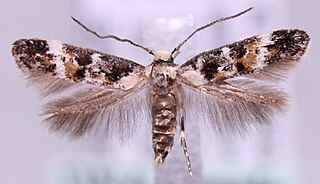
Mompha lacteella is a moth in the family Momphidae found in Asia and Europe.

Mompha propinquella is a moth in the family Momphidae found in Europe.
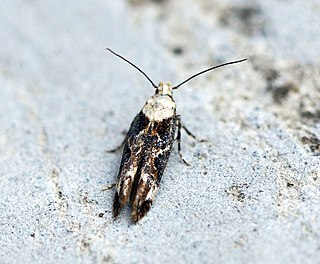
Mompha divisella is a moth in the family Momphidae. It is found from southern Scandinavia to the Caucasus and central Asia.
Mompha bradleyi is a moth in the family Momphidae found in Europe.
Mompha confusella is a moth in the family Momphidae. It found from central and southern Europe to Transcaucasia. In Europe, it has been recorded from the Czech Republic, Austria, Hungary, Slovakia, Ukraine and Russia.
Mompha meridionella is a moth in the family Momphidae that can be found in the northern Caucasus and Greece.
Mompha jurassicella is a moth in the family Momphidae that can be found in western Europe. The range extends to Switzerland in the east.
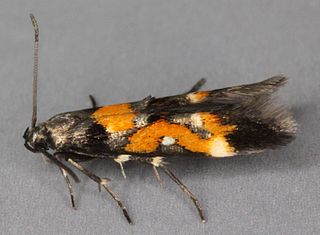
Mompha locupletella is a moth in the family Momphidae that can be found in the Palearctic including Europe.

Eudonia sudetica is a species of moth in the family Crambidae described by Philipp Christoph Zeller in 1839.

Phaulernis fulviguttella, the yellow-spotted lance-wing, is a moth of the family Epermeniidae found in the Palearctic including Europe.
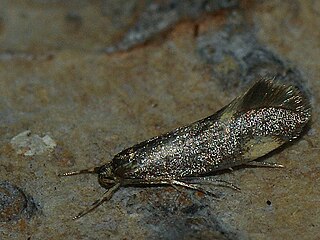
Metalampra cinnamomea is a moth of the family Oecophoridae. It was described by Philipp Christoph Zeller in 1839. It is found in most of Europe, except the Iberian Peninsula, most of the Balkan Peninsula, Ireland and Great Britain.














